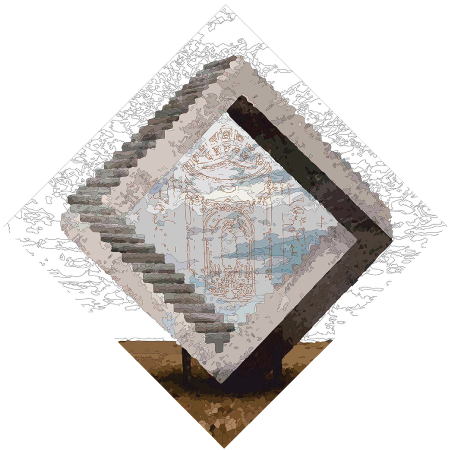Bio
About me
The work of Renato Manzoni (1945) is the symbiotic result of his technical training in architecture, industrial design and graphics as well as his humanistic training in areas such as theology and meta-psychics.
His self-taught foray into sculpture began early on under the guidance of his father, then continued in various artists’ studios until he arrived at the Atelier Saint Luc in Paris, where he specialised in traditional Byzantine iconography.
Manzoni’s public career began in Barcelona (Spain) in the world of conceptual, abstract and symbolist art in the 1970s. In the heyday of matter informalism and op-art, Renato Manzoni was already a very active figure in Catalan avant-garde art circles.
The critics of the time described him as a multidisciplinary artist, an integrationist of sculpture, painting and architecture. They added “beautiful sculpture-architectures, not only because of the purity of the geometric construction, but also because of the light”. The critics recognised him with the Señal-70 prize.
Committed to the dissemination of art, Manzoni was director of an avant-garde art gallery in Barcelona, critic and essayist for Editorial Dopesa and Grupo Mundo, curator for the Barcelona City Council of the Encuentros de Arte Moderno en el Metro and curator for Spain of the Italia 2000 awards of the Fondazione Bombelli in Naples.
At the end of the 1980s his works lose physical and material volume and acquire it visually. They are paintings with a fractal aesthetic reminiscent of mathematical models, works that belong to the Neo-Geo movement (Neo-Geometric-Conceptualism).
At the same time, he researched ancient artistic techniques, in particular Byzantine egg painting on panel, and the aesthetics of Occitan-Catalan Romanesque lime frescoes, which led to the execution of various icons and murals.
In the 1990s, with the rise and generalisation of PCs, Manzoni began to use the computer for professional purposes in the field of architecture and design. His artistic work also entered the digital world, while retaining its pictorial character as well as that of architectural design and even conceptual proposals.

